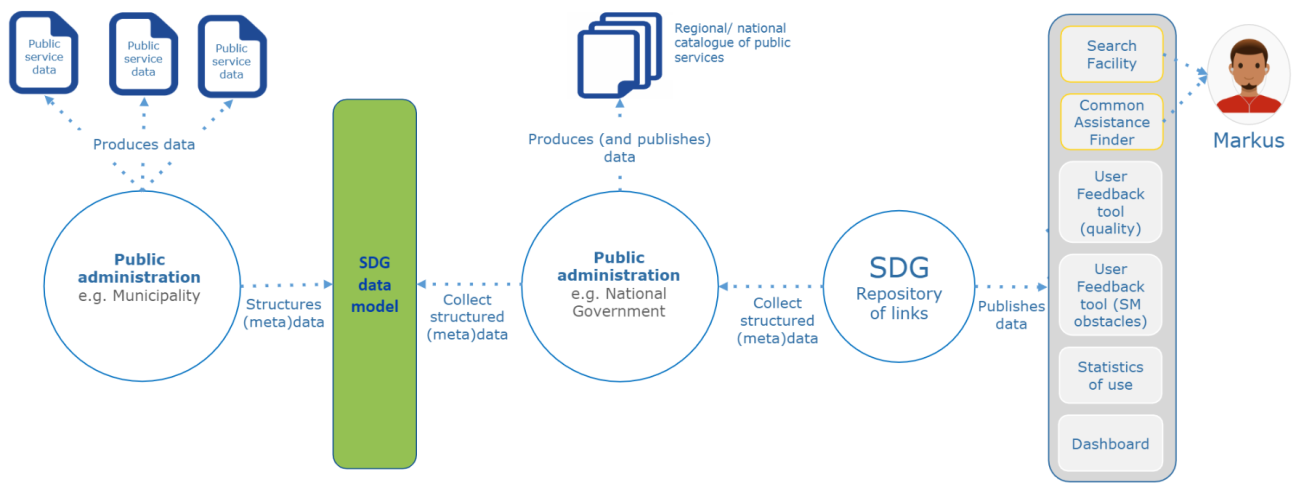Please note that this page is deprecated and the information might not be completely up-to-date. The main reason is that Your Europe and SDG-OOTS do no longer make use of this model. Since CoS, and therefore this page, has become part of SEMIC the most recently published information can be found on the SEMIC Support Centre.
Table of contents
- What is the SDG Services Model ?
- How does the SDG Services Model differ from CPSV-AP
- Why creating a SDG services model?
Access to SDG Services Model GitHub repositories
What is the SDG services model ?
The Single Digital Gateway Regulation follows similar objectives as the Catalogue of Services Action: improving the exchange of public services descriptions between administrations across borders and improving the searchability and accessibility of public service information for the citizens and businesses. To achieve this, the SDGR describes a list of procedures and information areas considered as particularly relevant in the crossborder exchange of public service information such as requesting a proof of residence (procedure) or travelling within the Union (information area).
To achieve these objectives, one key challenge for the Member States is to agree on common concepts for describing these procedures and information required. For example, what is meant by 'public organisation', 'competent authority', or 'life event'. Together with Member States and DG GROW, the Action has worked on a draft version of an SDG services model for describing the concepts relevant in the SDGR about public services. The latest version is published on GitHub.

How does the SDG Services Model differ from CPSV-AP ?
The SDG services model is reusing the best practices from years of experience maintaining and implementing the CPSV-AP model while only keeping the elements that are needed for implementing the regulation.
Although the development of the SDG services model is based on CPSV-AP, its scope is different. CPSV-AP captures fundamental characteristics of a public service in a context neutral manner in order to maximise its re-use and avoid lockdown in one domain. On the contrary, the SDG services model has a much more practical focus, namely to comply with Single Digital Gateway Regulation. As a consequence, the information requirements coming from the regulation represent a specific context for developing the SDG Services Model and deciding what should be included or not. For more information about CPSV-AP itself, consult the related page on the SEMIC Support Centre.
Why creating a SDG services model?
The main reasons for creating a SDG services model for defining the common characteristics of the procedures and information areas from the regulation are the following:
- Digitalise and automate the exchange of metadata with the Repository of Links and, ultimately, the Single Digital Gateway portal;
- Comply with the SDGR;
- Reduce interoperability costs for the Member States by agreeing upfront on a common model (each Member State would have to align its information with one model instead of each Member State with all other Member States);
- Structure your information in a way that could be reused for future applications (e.g. chatbot, profiling);
- Implement a flexible data model that could be easily adapted and/or extended to evolving needs.
Access to SDG Services Model GitHub repositories
If you are looking for technical information about the specification or you would like to suggest some changes, we invite you to click on the icon below to be redirected to the repository of the specification.

